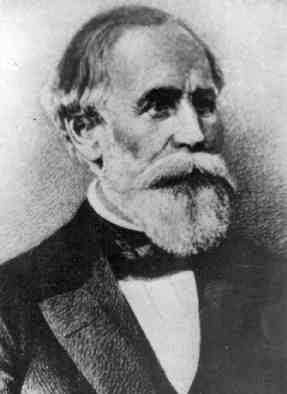|
William Coulson (mining Engineer)
William Coulson (1791-1865) was a mining engineer and master shaft sinker who was responsible for sinking more than 80 mine shafts in North East England along with others in Prussia and Austria. He was also notable for leading the rescue and recovery team after the Hartley Colliery disaster of 1862. Early life William Coulson was born in 1791 in Gateshead to William and Barbara Coulson. His father was a pitman at Eighton Banks Colliery. William began work at about 8 years old as a trapper boy spending twelve hours underground opening and closing a door to enable the ventilation system to function properly. He progressed to work as a putter, hewer, borer and blacksmith at various collieries on Tyneside. Apparently after an eight hour shift as a hewer in a Newcastle colliery, Coulson then travelled to a pit south of the river to work as a collier trimmer in order to augment his income. The sinker In about 1812 he began as an independent mining contractor with a contract for winning ... [...More Info...] [...Related Items...] OR: [Wikipedia] [Google] [Baidu] |
Hartley Colliery Disaster
The Hartley Colliery disaster (also known as the Hartley Pit disaster or Hester Pit disaster) was a coal mining accident in Northumberland, England, that occurred on 16 January 1862 and resulted in the deaths of 204 men and children. The beam of the pit's pumping engine broke and fell down the shaft, trapping the men below. The disaster prompted a change in British law that required all collieries to have at least two independent means of escape. Collieries Hartley old pit Hartley old pit was established in the coastal village of Hartley, Northumberland, (today part of Seaton Sluice) during the 13th century; the earliest extant records date from 1291. The colliery suffered increasingly from flooding as the seams were worked out under the sea and in 1760 the first atmospheric engine was installed, followed later by more powerful engines. Despite these efforts, the flooding became so severe that the old pit was abandoned in 1844. Hester pit The coal was sufficiently valuable ... [...More Info...] [...Related Items...] OR: [Wikipedia] [Google] [Baidu] |
William Thomas Mulvany
William Thomas Mulvany (11 March 1806 in Dublin, Ireland – 30 October 1885 in Düsseldorf, Germany) was an Irish entrepreneur in Germany. Life Mulvany was one of seven children of Catholic parents in Dublin: his father was the painter Thomas James Mulvany. He converted to the Anglican Communion as Catholics were barred from all but the very lowest grades of the civil service. He joined the Ordnance Survey in 1826 and ten years later moved to the Office of Public Works. In 1832, he married Alicia Winslow, the daughter of a wealthy landowner from Fermanagh. He had five children with her. From 1855 until his death, Mulvany lived in Düsseldorf. In 1875, he built the "Mulvany Villa" in Herne, but it's not known whether he ever lived there. He died in 1885 and was buried in Düsseldorf. The city of Gelsenkirchen made him an honorary citizen in 1880. In Herne, a street near the former Shamrock coal mine was named after him. Also Castrop-Rauxel, Recklinghausen and Düsseldorf ... [...More Info...] [...Related Items...] OR: [Wikipedia] [Google] [Baidu] |
Nicholas Wood
Nicholas Wood FGS FRS (24 April 1795 – 19 December 1865) was an English colliery and steam locomotive engineer. He helped engineer and design many steps forward in both engineering and mining safety, and helped bring about the North of England Institute of Mining and Mechanical Engineers, holding the position of President from its inauguration to his death. Early life Nicholas Wood was born at Sourmires, in the parish of Ryton, then in County Durham, the son of Nicholas and Ann (née Laws) Wood. Nicholas Senior was the mining engineer at Crawcrook colliery. Nicholas Junior attended the village school at Crawcrook and started work in 1811 at Killingworth Colliery as an apprentice colliery viewer under the guidance of Ralph Dodds. Wood eventually became the viewer, or colliery manager, of Killingworth Colliery in 1815. He was there a close associate of the colliery enginewright George Stephenson, helping him develop his version of the safety lamp and making considerable technic ... [...More Info...] [...Related Items...] OR: [Wikipedia] [Google] [Baidu] |
